Literary resources are often divided by genre and into categories of primary literary materials and literary studies. When necessary these same categories will be maintained here. There are many useful materials listed in the Russian literary biography section below that include extensive bibliographies. More so than in other field, literary sources are largely arranged around the authors who produce the great literature of the society. While there are works discussing particular genres and much literary criticism the vast majority of reference and bibliographic literature is organized around the major writers of the language. Thus it is often useful to find those sources that list the major sources on individual authors in order to find works on the genre that a particular author represented.
Before we proceed any further, we would like to draw your attention to a resource that can facilitate your search for information. HathiTrust is a shared digital repository created by a growing number of university libraries that aims at building a comprehensive digital archive of library materials converted from print. Materials in it can be found in two forms: either full-text or search only. If a resource mentioned on this page is available in HathiTrust as a full-text document, we provide a link to it. However, even if a resource is available only for search (and most of the resources on this page are), it can still be helpful: it allows you to find out if a term or a person you are looking for is mentioned in a particular resource and how often it is mentioned. For a HathiTrust Catalog, go to http://catalog.hathitrust.org
Guides and Bibliography of Bibliographies
Aside from the guides cited below, bibliographies on Russian literature can be found in any of the general bibliographic compilations, such as Bibliografiia Rossiiskoi Bibliografii, as well as in online sources like the Russian National Library Catalog. In the latter a search on subject terms will produce a good list of current bibliographic publications.
Another source for current bibliographic publications is the Russian Academy of Sciences Social Science Division (INION) publication Literaturovedenie. This publication is available in paper form as a periodical published monthly or through the Literaturovedenie database on the INION website. To identify bibliographic publications here after logging in as a ‘guest’ it is necessary to search under the keyword: bibliograficheskie and bibliografiia (spelled in russian: библиография, библиографические). Thus you can get the set of bibliographic entries relevant to literary criticism and exclude those on other topics. You can also chose options to limit by date and language to further refine the results of your search.
In the paper copy, many issues will include entries under the heading “Bibliograficheskie i spravochnye izdaniia.” This is certainly more straightforward in many ways. However, since the INION bulletins were issued monthly it is a very time consuming search.
![]()
Putevoditel’ po bibliografii, bio-bibliografii, istoriografii, khronologii i entsiklopedii. Sistematicheskii, annotirovannyi ukazatel’ russkikh knig i zhurnal’nykh rabot, napechatannykh v 1736-1932 gg.
A.G. Fomin. New York: Johnson Reprint Corp., 1966.
U of I Library Call Number: International & Area Studies Russian Reference (Slavic) and Main Stacks 016.8917 F73p1966
This work is annotated elsewhere in detail. It is of such importance that is mentioned here again. The extensive bibliography and annotations will provide the researcher with a wealth of information on the works described. The literary contents of each work are described and citations to reviews of the bibliographies are included in each entry. The volume includes essays on research methods for literary studies. There is extensive cross referencing. A review of the table of contents will give the literary scholar an overview of the types of reference sources that exist in the field.
![]()
Russkaia khudozhestvennaia literatura i literaturovedenie. Ukazatel’ spravochno-bibliograficheskikh posobii s kontsa XVIII veka po 1974 god.
Kandel, B. L., Fediushina, Benina, M. A.(comp.). Moscow: Izdatel’stvo “Kniga,” 1976.
U of I Library Call Number: International & Area Studies Russian Reference (Slavic) 016.8917 K13 r.

This guide to literary sources is the most current publication of its kind on the subject. The scope of the work is broad covering folklore, children’s literature, illegal publications, archival resources, literary societies, regional writers as well as the major authors of Russia and the Soviet Union. The guide is divided into thematic sections on such topics as Marxism-Leninism in literary works, general questions, indexes of periodical publications, indexes of bibliographic works, works on pseudonyms, terminological dictionaries, individual literary periods, thematic index of literature, index of sources on individual writers and an index of literary critics. The entry above which can be found on p.66 of the bibliography, is representative of the type of detail that can be expected in the annotations throughout the work. The compilers give a basic profile of each work listed, including information on the number of entries, the depth of coverage and the basic arrangement. The work does suffer from the censorship of the period. Nevertheless, it is an essential guide for the literature of the period. It is encouraging to know that the work is presently being updated at the Russian National Library and should be published soon.
![]()
Russkaia slovesnost’ s XI po XIX stoletiia vkliuchitel’no .
Mezier, A. V. Ch.1-2. Sankt-Peterburg, 1899.
U of I Library Call Number : Russian Reference 016.8917 M57r V.1
HathiTrust full text: http://hdl.handle.net/2027/mdp.39015036738386
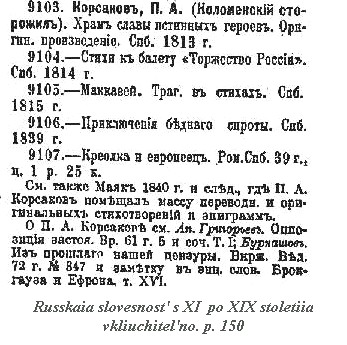
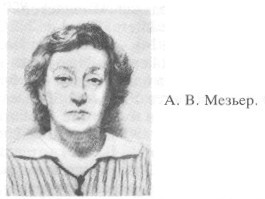
In our collection it is perhaps the second volume of this work that is used most commonly. It contains references to individual works by the writers of the eighteenth and nineteenth centuries. But it is in the first volume that Mezier compiled a bibliography of bibliographies on a broad range of literary topics. The first section of the first volume is devoted to bibliographic publications. These are divided by subject and cover pre-Petrine publications, church publications, translations, lives of the saints, and general bibliographic publications. All entries have complete bibliographic information and some include annotations. The bibliography includes books and articles.
The second part of the publication begins with an extensive section on the authors of the eighteenth and nineteenth centuries. It is unusual in that the entries for the collections list the contents of each volume. It also has the very useful feature of listing critical literature on specific works. Entries for individual authors end with references to major biographical sources, as can be seen above. The second part is divided into a number of sections, the largest being that devoted to listing the works of and about individual authors, described above. This is followed by sections on specific topics, the first of which is a listing of bibliographies on the critical and historical literature of the eighteenth and nineteenth centuries.
![]()
Bibliographies
There are hundreds of literary bibliographies, most devoted to specific authors. These are listed in such sources as Russkaia khudozhestvennaia literatura i literaturovedenie. Ukazatel’ spravochno-bibliograficheskikh posobii s kontsa XVIII veka po 1974 god. Excellent bibliographic materials are often included in biographical sources such as Iazykov’ s Obzor zhizni i trudov pokoinykh russkikh pisatelei. Other biographical sources will be helpful and a review of the biographical materials included in the Russian biography section might be in order. There are some major bibliographic sources that any scholar working in this field should know. In this section are listed those major sources that are essential for literary research. We have also included some of the more important sources for specialized research.
It is also important to keep in mind that some of the general resources will be very important in identifying specific works. If you are seeking the critical literature of the 18th century, it will be worth your time to consult Neustroev‘s index of 18th century periodicals.
![]()
Bibliografiia sovetskikh russkikh rabot po literature XI-XVII vv. za 1917-1957 gg.
Droblenkova, N. F. (comp.). Leningrad: Akademiia Nauk SSSR, 1961.
U of I Library Call Number: International & Area Studies Russian Reference (Slavic) and Oak Street Facility 016.8917 D83b
- Bibliografiia rabot po drevnerusskoi literature, opublikovannykh v SSSR …
Droblenkova, N. F. (comp.). Leningrad: “Nauka.”
U of I Library Call Number: Russian Reference 016.89171 D83b V.1-2 (1958-1967).
U of I Library Call Number: Russian Reference 016.89171 D83bi (1968-1972) - Bibliografiia rabot po drevnerusskoi literature, opublikovannykh v SSSR 1973-1987 gg. Ch. I-II .
Belobrova, O. A. (comp.). St. Petersburg: Institut russkoi literatury (Pushkinskii Dom), 1996.
U of I Library Call Number: Russian Reference 016.89171 B471 V.1-2 - Bibliografiia rabot po drevnerusskoi literature, opublikovannykh v SSSR 1988-1992 gg.
Belobrova, O. A. (comp.). St. Petersburg: Institut russkoi literatury (Pushkinskii Dom), 1998.
U of I Library Call Number: Russian Reference 016.89171 B4712
The titles listed above all cover the same subject area and are all organized in the same way. They are an essential tool for anyone working on early Russian history or literature. Arranged chronologically by year, each volume includes several indexes to facilitate access. There is a subject index and two name indexes: an index of authors of Russian and translated works and an index of translators, researchers and compilers. The most recent volume included an index of periodical titles, Russian and foreign that were consulted in the volume. The bibliography always included the works of foreign scholars. Those published in Latin scripts are listed at the end of each chronological section.

This is a rich source that can be used in a number of ways. For example, if a list of bibliographies that include material on old Russian literature is needed, a search of the subject index under bibliografiia will provide the entry numbers for these titles. The compilers have included references to all related bibliographic works, thus it is possible to find references to such works as Melts’ Russkii folklor or Slavianskoe iazykoznanie.
The entries vary in length but all provide complete bibliographic information. Many list the complete contents of a work and are quite extensive as in the entry for the Slovar Knizhnikov i Knizhnosti Drevnei Rusi. Entries also include reviews when possible as can be seen in the above example from the volume covering 1983-1987.
![]()
Istoriia russkoi literatury XVIII veka. Bibliograficheskii ukazatel’.
Stepanov, V. P. Leningrad: “Nauka”, 1968.
U of I Library Call Number: International & Area Studies Russian Reference (Slavic). Main Stacks and Oak Street Facility 016.8917 ST43i
This basic source on Russian literature of the 18th century is divided into two broad sections. The first “General Section” is subdivided into sections of specific areas of interest: the history of the literary language, social thought, publishing, periodical publishing, censorship, the relationship between Russian and West European literature, drama, the history of the theater, the book trade. The second part “Personalia” consists of sections on each of the major writers of the day. In this it is similar to Muratova’s books.
The sections on individual authors begin with citations to collected works, translations by the writer, critical literature on the author, biographical materials, guides and in some cross references to other relevant citations in the volume. Where annotations are included they are brief and descriptive in nature.
![]()
Istoriia russkoi literatury XIX veka. Bibliograficheskii ukazatel’.
Muratova, K. D. Moscow: Akademiia Nauk SSSR, 1962.
U of I Library Call Number: Main Stacks 016.8917 Ak1i
- Istoriia russkoi literatury kontsa XIX-nachala XX veka. Bibliograficheskii ukazatel’. Muratova, K. D. Moscow: Akademiia Nauk SSSR, 1963.
U of I Library Call Number : Russian Reference 016.8917 Ak1is - Istoriia russkoi literatury XIX-nachala XX veka: Bibliograficheskii ukazatel’.
Muratova, K. D. Sankt-Peterburg: Nauka, 1993.
U of I Library Call Number: Russian Reference 016.891709 G128i
For anyone working on the 19th or early 20th century this is the most basic and essential of all literary resources. Muratova’s bibliography covers general works on literary genres as well as works on individual authors. The bibliography covers topics such as literary societies as well. With the publication of the 1993 volume the work on the turn of the century has been brought up to date and now provides a more complete picture of the history of Russian literature. This volume is fundamentally different form the original two in that it does not contain sections on individual authors. It has a great deal of material on individual periodical publications.
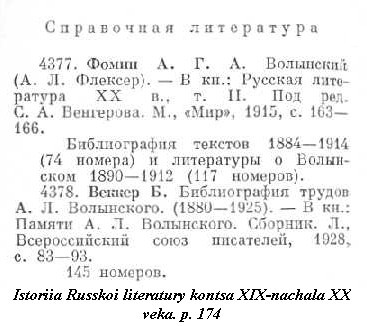
In contrast, the first two volumes were primarily references to works on specific authors and were organized around those names with only short sections devoted to genres. In these works each author entry begins with citations to collections of the authors works, followed by citations to biographic material and a section of references to literature about the author. When possible a closing section includes citations to reference materials on the author.
Together the three volumes provide an invaluable introduction to the publications on the literature of the 19th and early 20th centuries. In all three volumes any annotations that are included are very brief. Some will have lists of contents, particularly in the third volume. This volume is an especially important source for information on literary journals. One curious omission is Masanov’s “Ukazateli soderzhaniia russkikh zhurnalov i prodolzhaiushchikhsia izdanii 1756-1970.” While this is a general listing of periodical indexes, it is an essential resource for anyone doing research with periodicals and has a subject listing.
![]()
Russkie Pisateli. Opyt bibliograficheskogo posobiia po Russkoi literature XIX-XX st.
Vladislavlev, I. V. Moscow: Gosudarstvennoe izdatel’stvo, 1924.
U of I Library Call Number: International & Area Studies Russian Reference (Slavic) 016.8917 G95r1924
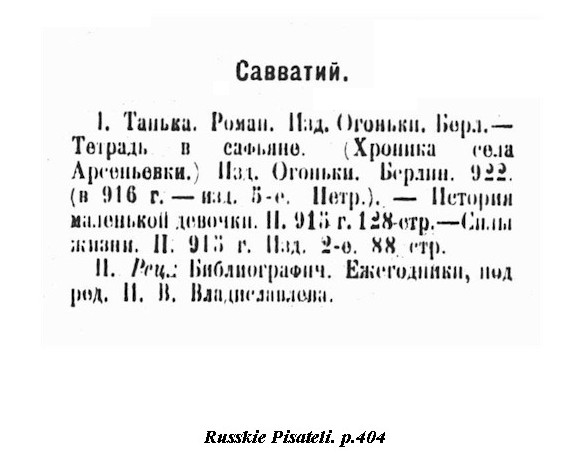
This bibliography focuses on the writers of the end of the 19th century and the revolutionary period. The guide is divided into two main parts: an alphabetical list and a chronological list. There is also a supplement with a section on literature of the revolutionary period. The alphabetical list is further subdivided into sections on belle lettres and poetry, criticism and the history of literature. Entries in these sections are listed by the writers’ names. The bibliography includes more than 10,000 citations to collected works, biographical resources and literary criticism.
There are also three supplements to the bibliography: literature of the revolutionary period; proletarian works and questions of poetics. The volume includes an index of authors. Because of its publication date this volume does not reflect the severe censorship of later reference works. It is one of the few Soviet period publications that includes citations to the work of emigre authors.
![]()
Russkie Sovetskie pisateli. Prozaiki. Biobibliograficheskii ukazatel’.
T.1- Leningrad, 1959-1969
U of I Library Call Number: International & Area Studies Russian Reference (Slavic) 016.8917 L54r v. 1-6
One of the most comprehensive bibliographies for literary materials, this source has many uses. Each entry includes a brief biography. This is followed by a bibliography of the authors’ works organized into the following sections: collected works; individual publications; works not issued in collections and not published separately (largely, those titles published only in periodicals). This latter category includes works outside the genre of belle lettres. The next section lists critical literature organized by the titles being reviewed. There is a section of review literature for any works that have been staged and a final section listing the original publication information on titles published separately. The latter two sections make this an excellent source for review literature.
If the author has participated in the making of films, or his works have been used for films there is a listing of the relevant film titles, their directors and citations to any critical literature. Entries are arranged alphabetically and each volume includes a separate name index and a list of periodical titles cited in the volume. The first two volumes include additional materials on Soviet literature. Volume one begins with a list of the major party documents on Soviet literature. Volume two opens with a list of general texts on the history of Soviet literature, theater and film.
The bibliography is based on the state registry of published works, the card catalogs of Russian National Library, the Institute of Russian Literature at the Academy of Sciences and the Russian State Library. For anyone interested in Soviet literature this source will be enormously useful.
![]()
Russkie Sovetskie pisateli. Poety. Biobibliograficheskii ukazatel’.
Tom 1-15. Moscow: Izdatel’stvo “Kniga”, 1977-1992.
Russkie pisateli. Poety (Sovetskii period). Biobibliograficheskii ukazatel’.
Tom 16- . Moscow: Izdatel’stvo “Kniga”, 1977-1992.
U of I Library Call Number: International & Area Studies Russian Reference (Slavic) 016.8917 R9215 v.1-
Like its counterpart on prose writers, this is a truly impressive compilation of the works of the poets of the Soviet era. Covering more than 200 poets this bibliography affords the scholar some unique access points to information on their works. One of its most valuable features is its listing of publication information for individual poems. In general the format is similar to that of the prose bibliography, beginning with a biography on the poet, then listing books and any prose works by the author. This is followed by an alphabetical list of poetic works published in books. There is a section on publications in periodicals collections, including individual poems and writings outside the field of poetry. Along with the citations to critical literature on the author’s works, there are references to works of biography on the author. As with the volumes on prose authors there is an index of names and a list of periodical publications cited in the volume. At present the compilers have reached the letter “S.”
![]()
Sovetskoe literaturovedenie i kritika. Russkaia Sovetskaia literatura (obshchie raboty).
Moscow: Izd. “Nauka”. 1962-
U of I Library Call Number: Russian Reference 016.891709 So89 1917-1962, 1963-1967, 1968-1970, 1971-1973
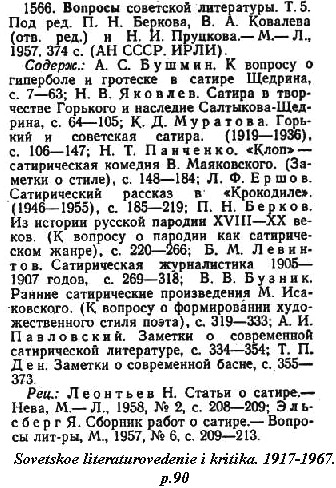
For those seeking citations to the literary criticism of the Soviet period this is a most important source. It has the great virtue of having been compiled into just a few volumes, which spares the user the tedious search of a monthly periodical bibliography. It is also well indexed with a combined name-heading index at the end of each volume. The volume is divided into chronological sections which are subdivided by genre.
The bibliography indexes critical literature about Soviet literature by Soviet critics. The entries are full bibliographic citations, occasionally annotated. The index includes references to articles published in books, journals and irregularly published serial (e.g., “Uchenye Zapiski,” “Trudy”). References to collections often list the complete contents of the volume. Many entries include reference to reviews.
![]()
Sovetskoe literaturovedenie i kritika: teoriia literatury. Bibliograficheskii ukazatel’ 1917-1967.
Ch.1-4. Moscow: AN SSSR. INION. 1989
U of I Library Call Number: International & Area Studies Russian Reference (Slavic) 016.891709 G281s
This bibliography is structured much the same as the broader work, of similar title Sovetskoe literaturovedenie i kritika cited above. The obvious difference has to do with the focus of this work on questions of literary theory. The fourth volume serves as an index to the rest of the volumes. The first three volumes are divided into eleven subject sections: questions of literary theory in the Marxist Leninist school, theoretical and methodological questions of literary criticism, the history of aesthetic thought, general works on literary theory, literature and society, aesthetic methodology and literary direction, poetics and stylistics of literature, styles and genres of literature, questions of translation, the creative process and literature and the reader. The set also includes a supplement of citations to works by foreign authors published in the USSR in translation. The index in the fourth volumes provides access by subject, name or title and includes a list of the periodicals included.
The entries themselves are similar in format to those in the earlier publication cited above. Each entry has complete bibliographical information. Citations to collections include the complete contents and many entries also have citations to reviews.
![]()
Pervaia mirovaia voina i russkaia literatura: Literatura na russkom iazike za 1914-2011 gg.
Lapidus, A. Ia., E. F. Tsvetkova, ed. Available online at the National Library of Russia.
This online bibliography includes almanacs and lists of works from 1914-1917, as well as a list of personalities associated with the Frist World War. It also features literary criticism up to 2011, as well as Russian philosophical works written on or about the war while it was ongoing. This index also includes a list of the war correspondence of Andrei Bely from 1916, and the correspondence of Valery Bryusov published in 1914-1915. The index also includes a bibliographic list of illustrations created and published during the war, and about the war.
![]()
Literaturnye obshchestva, kruzhki, i salony v Rossii v XIX veke: Spisok literatury na russkom iazike za 1828-1993 gg.
Khmelevskaia, N. A., ed.
This bibliography features information on literary salons, discussion groups, and societies in Russia during the 19th century. The materials listed here are mostly personal memoirs, member lists, and other miscellaneous notes. The index is divided into various sections, with the first focusing on general writings about these groups, in Russian, dating from 1869 to 1981. The following section focuses on literary circles in St. Petersburg. It features a sub-section of writings about these groups, and then primary documents categorized by the name of the specific society or salon. The categories are as follows: Beseda liubitelei russkogo slova; Vol’noe obshchestvo liubitelei nauk, slovesnosti, i khudozhestv; Vol’noe obshchestvo liubitelei rossiiskoi slovestnosti; Kruzkok shestnadtsati; Obshchestvo liubitelei drevnei pis’mennosti; Russkoe literaturnoe obshchestvo (byvshee Literaturno-dramaticheskoe); and Pushkinskii kruzhok. The section that focuses on literary circles in Moscow is organized in much the same way, with the categories as follows: Obschestvo liubitelei rossiiskoi slovesnosti pri Moskovskom universitete; Obshchestvo russkikh dramaticheskikh pisatelei; Literaturno-khudozhestvennyi kruzhok; and Shekspirovskii kruzhok. The following section lists circles and societies in cities other than the two aforementioned capitals. This is followed by a section that lists publications on or by individuals involved in the salons and literary societies. The last section lists bibliographies and other reference materials.
![]()
Literary Encyclopedias
The two major literary encyclopedias are described elsewhere in this guide. It bears noting that while the sources below are more current and in some cases more specialized, the Kratkaia Literaturnaia Entsiklopediia and the Literaturnaia Entsiklopediia are the most important sources for basic information on the various genres of Russian literature. Many of the more recent sources tend to focus on biographical information. While this is extremely valuable it is often important to find more general information on the history of a particular literary movement. For this kind of information, the encyclopedic sources are really the best place to start.
Reference guide to Russian Literature.
Cornwell, Neil (ed.). London: Fitzroy Dearborn Publishers, 1998.
U of I Library Call Number : International & Area Studies Russian Reference (Slavic) Q.891.703 R25
This unusual source functions as a biobiblography of major Russian writers, a chronology of Russian literature and as a survey of the historical development of literature in Russia. It is broad in its scope covering such topics as Russian theater, the superfluous man in Russian literature, women’s writing in Russia, socialist realism and more. The student approaching this work for information on Russian literature will find it most useful for information on specific authors.
The volume is arranged beginning with lists of writers and works covered in the volume, a chronology of writers and a general reading list. This is followed by a collection of essays on a wide range of topics on Russian literature. The editor notes in his opening comments that the work has an “unashamed bias” to the 19th and 20th centuries. The guide includes entries on some 273 writers and 293 works. Entries on individual writers are frequently followed by entries on at least one of their works. The entries on the works are often as extensive as the entries on the authors. One other detail about the selection of authors for this work. Selection of authors was limited to Russian writers and even non-Russians writing in Russian. Authors such as Vasil Bykov were omitted since he wrote in Belorussian.
All articles are signed and each author entry begins with a biographical sketch with basic information on the writer. This is followed by a list of his/her publications, organized by genre. The bibliography concludes with a list of major critical literature.
![]()
Entsiklopediia literaturnykh geroev.
Moskva: Agraf, 1997.
U of I Library Call Number: International & Area Studies Russian Reference (Slavic) 809.93352 En82
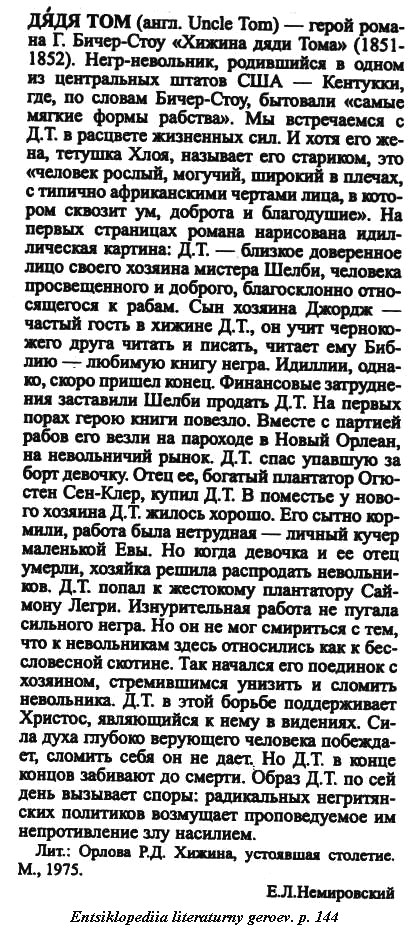
If you are seeking Russian articles on Schiller’s Luisa Miller or Hemmingway’s Robert Jordan or an introduction to Russian literature’s major characters, this volume is a handy resource. Each entry summarizes a major character from an important literary work, describes his/her role in the work and ends with a bibliography or works in Russian and other languages for further reading. Characters like Faust that have appeared in the works of more than one author have one main entry subdivided for each unique work in which they appeared. The volume includes some 900 articles.
One of the peculiarities of the source is the selection of characters. Jane Eyre is present, but Elizabeth Bennett is not. Russian literature is more evenly covered. While it is far from comprehensive it is a useful source for those seeking a summary treatment of major literary characters.
The volume does include an index of names which helps with some of the more difficult transliterations.
![]()
Literatura i kul’tura Drevnei Rusi.
Kuskov, V. V. Moscow: “Vysshaia shkola,” 1994.
U of I Library Call Number: International & Area Studies Russian Reference (Slavic) 891.703 L712
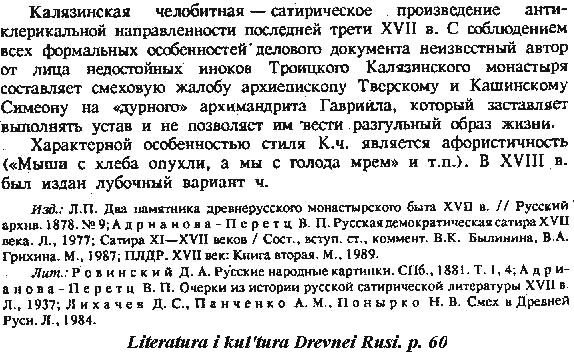
Covering literature, art, and architecture, this dictionary/bibliography has a variety of uses. As an encyclopedic source it provides information on a variety of subjects specific to the culture and literature of ancient Rus. The volume is divided into four sections. The first on literature, the second on art and architecture, the third a bibliographic guide and dictionary and the fourth a supplement.
The citation above will give a good idea of the kind of information available in the dictionary. This is a brief entry. Many are extensive with lengthy bibliographies. The supplementary materials include a genealogy of the princely houses of ancient Rus and information on the Russian calendar. The volume ends with an index of names.
![]()
Spravochnyi slovar’ o Russkikh pisateliakh i uchenykh umershikh v XVIII i XIX stoletiiakh i spisok Russkikh knig s 1725-1825.
Gennadi, Grigorii . V.1-3. Berlin, 1876-1908.
U of I Library Call Number: Oak Street Facility 928.917 G28s 1969 v.1-3.
HathiTrust full text:
vol. 1: http://hdl.handle.net/2027/mdp.39015023557625
vol. 2: http://hdl.handle.net/2027/mdp.39015023557633
vol. 3: http://hdl.handle.net/2027/mdp.39015034565955
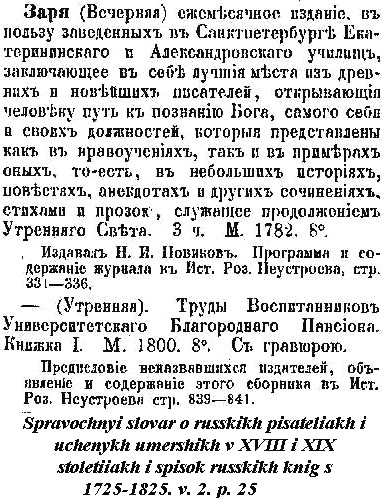
Gennadi’s catalog of books includes an enormous range of material. For the literary scholar interested in those authors who lived between 1725 through 1825 it is a convenient source not only for biographical information but also for verification of generic titles such as “Rukovodstvo” or “Azbuka.” Entries are arranged alphabetically. Those concerned with the writings of a specific author begin with brief biographical information on the author. This is followed by a bibliography of the author’s works. Many of these entries conclude with a listing of additional sources on the author. The dictionary includes poets, dramatists, literary critics and writers outside the world of belle lettres There are also entries on periodicals, with detailed information on their publication history.
Gennadi’s work was based on research of many years. He had published other bio-bibliographical works. In this multi-volume work he hoped to compile information that previously would have demanded a study of numerous sources, such as Neustroev and others. Unfortunately, the dictionary was never completed, ending with the letter “R.”
![]()
Literary Dictionaries
The term “dictionary ” can be applied to a guide to specialized terminology, a biographical resource, a bio-bibliographical handbook and a variety of other sources. Less extensive than an encyclopedia, subject dictionaries can cover all terminology for a field such as Harkins volume, or be limited to the terminology and major figures in one period of literary history like Kasack ‘s dictionary. Thus, this section contains a broad range of material from dictionary’s of the literature of Ancient Rus to dictionaries of proverbs. Other broader linguistic dictionaries like the Academy dictionary of the literary language should not be overlooked because they are listed with general dictionaries of the language. As with the library itself, your ability to find all the resources you need requires you to be familiar with a variety of subject areas.
![]()
Slovar’ knizhnikov i knizhnosti Drevnei Rusi.
Vyp. 1, 2 (Ch.1-2), 3. Akademiia Nauk SSSR. Institut Russkoi Literatury (Pushkinskii Dom). Leningrad: Nauka, 1987-
U of I Library Call Number: International & Area Studies Russian Reference (Slavic) 891.703 SL582 V. 1-3:1
For those seeking information on the literature of the eleventh through seventeenth centuries, this source contains a wealth of information. The first volume covers the eleventh through the first half of the fourteenth centuries, the next two volumes are devoted to the fourteenth, fifteenth, and sixteenth centuries, while the final volume focuses on the seventeenth century. Entries are extensive and include detailed bibliographic information. The example shown here is one of shortest but gives some impression of the type of information that can be gleaned from this work. Most include archival locations for the documents under discussion. The volumes focus on the scribes and the literary works of the period with extensive cross-referencing throughout the volume. All entries are signed and a bibliography of general sources is included at the conclusion of the volume. There are a number of excellent sources on early Russian literature. This work is certainly one of the most important for any scholar of the period.
![]()
Dictionary of Russian literature.
Harkins, William. Westport, Connecticut: Greenwood Press, 1976.
U of I Library Call Number: Main Stacks 891.703 H22d 1976
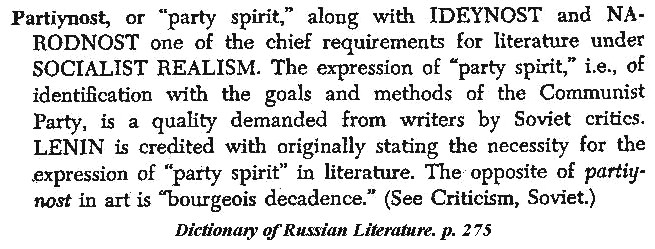
While somewhat outdated, this can be a useful tool for the beginning student in Russian literature. The entries are concise and supply Russian terminology to assist the reader. The text is extensively cross-referenced. The terminology selected for this volume include entries on terminology for journalism, philosophy, theater and literature.
While this volume includes biographical entries, they are brief and lack any bibliography. They can be helpful in placing a literary figure in Russian literary history. Entries include extensive cross-referencing, which is indicated by the “See” reference and by the printing of a term or name in all caps in the entry as above.
![]()
Handbook of Russian literature.
Terras, Victor (ed.). New Haven: Yale University Press, 1985.
U of I Library Call Number: International & Area Studies Russian Reference (Slavic), Oak Street Facility, and Undergrad Q.891.709 H191 c.9
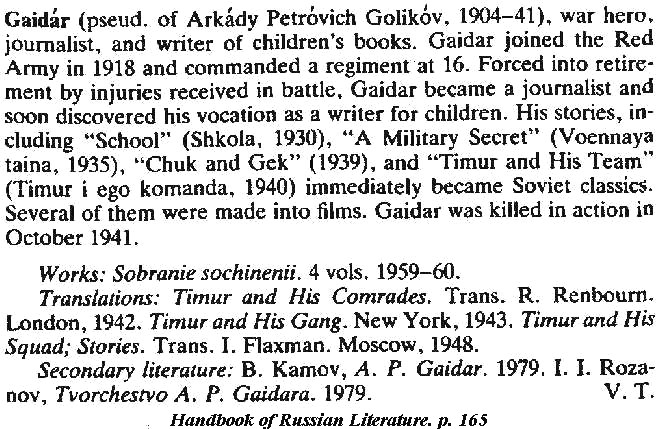
Truly an indispensable source, Terras’ book is invaluable for the student new to Russian literature or the seasoned scholar who works in other disciplines. Entries are included on literary topics such as “Historical novel,” “Romanticism,” “Structuralism and semiotics”; on journals such as Novyi mir and Teleskop and on the most important literary figures of Russia, those living in the Soviet Union and abroad. The editors of this volume have included more extensive information on those figures treated in only a cursory way in the Kratkaia Literaturnaia Entsiklopediia.
In the example above the reverse is true, as there is only a brief description of Gaidar’s life and works in Terras and a far more extensive entry in the Kratkaia Literaturnaia Entsiklopediia. The editors of this volume have been careful to cover all major topics. However, if, at the time the volume was compiled there was no substantial body of literature on a subject, that subject would be omitted.
Entries vary in length and reflect the judgment of the subject specialist writing the article. When possible, pseudonyms are included as are dates of birth and death. Cross-referencing within the volume is indicated by the use of small capital letters in the text of an entry. Entries include bibliographies of primary works, translations and secondary literature. The volume concludes with a bibliography of major resources and an index.
![]()
Dictionary of Russian Literature since 1917.
Kasack, Wolfgang. New York: Columbia University Press, 1988.
U of I Library Call Number: International & Area Studies Russian Reference (Slavic) and Oak Street Facility 891.709 K15l:E1988
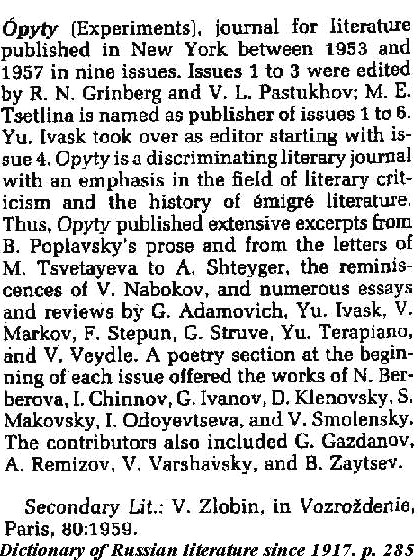
Wolfgang Kasack’s excellent dictionary is a source for biographical and terminological information. This dictionary exists in English , Russian ( Leksikon Russkoi literatury XX veka , 1991; 891.709 K15l:R 1996) and German ( Lexikon der Russischen literatur des 20. jahrhunderts, 1992; 891.709 K15l 1992). It can be useful for the scholar and the student with its detailed entries and thorough bibliographies. Originally published in German in 1976, the English edition has 706 entries, 619 authors and 87 subjects. While Kasack was finishing this work Victor Terras published his Handbook of Russian Literature and the first volumes of the Modern Encyclopedia of Russian and Soviet Literature were published. When there is additional information in these works, they are referenced in Kasack’s book.
Kasack has tried to include the major literary figures of the century and present an objective view of the literary merit of their works. He includes Russian writers living in Russia or abroad. Subject entries are included for the central terminology of the field, as well as for major journal titles. The length of author entries reflects the literary importance of the author. Biographical entries are divided into two sections: biographical information and literary evaluation. All entries include the authors full name, any pseudonyms, dates of birth and death, primary genres, beginning of literary career. Bibliographies are divided into primary and secondary sources. Titles in each section are arranged chronologically. The volume includes a name and subject index. Cross-references in the dictionary are indicated by small capitals.
![]()
Novaia abevega russkikh sueverii. Illiustrirovannyi slovar’.
Vlasova, M. Sankt-Peterburg: Severo-Zapad, 1995.
U of I Library Call Number: International & Area Studies Russian Reference (Slavic) 398.410947 V845n
This dictionary of superstitions can be a useful source in reading Russian literature. Several such dictionaries have appeared in recent years. The entries provide basic information on the meaning of the superstition and its region of origin is supplied whenever possible. The volumes is extensively cross-referenced. There is also a lengthy list of citations for further reading in the volume.
![]()
Russkie Sueveriia.
Vlasova, Marina. Sankt-Peterburg: Izdatel’stvo “Azbuka”, 2000.
U of I Library Call Number: International & Area Studies Russian Reference (Slavic) 398.410947 V845 r

The citation above drawn from Vlasova’s dictionary of superstition. As with all the entries in this source, the compiler has included the geographic origins of the the term and the source of her information. A brief entry was chosen in the interest of space here. However, many of the entries are extensive, providing varying usage of a term. The volume includes supplementary material in form of an essay by Vlasova entitled “O nesnaemom” and an essay by Nekrylova on demonology in literature. There is also an index of the literature cited and the dialects listed.
As noted above the entries are extensive in many cases. All include an explanation of the superstition, followed by a literary source for the usage. Variant forms of the term are also included.
![]()
Poslovitsy i pogovorki russkogo naroda. Ob”iasnitel’nyi slovar’.
Zimin, V. I. Moscow: “Siuta,” 1996.
U of I Library Call Number: International & Area Studies Russian Reference (Slavic) 398.99171 Z65 p
Some 4000 entries are included in Zimin’s dictionary of proverbs. The author collected material for more than 35 years consulting most of the major compilations of proverbs. However, the author’s focus has been on contemporary speech. The dictionary is arranged into topical sections. These are subdivided into sections on particular themes. It is an excellent resource for anyone working with contemporary Russian literature, particularly, literature that draws heavily on popular speech.
![]()
Vostochno-Slavianskii fol’klor. Slovar’ nauchnoi i narodnoi terminologii .
Minsk: “Navuka i tekhnika,” 1993.
U of I Library Call Number: International & Area Studies Russian Reference (Slavic) and Main Stacks 398.20947 V93g
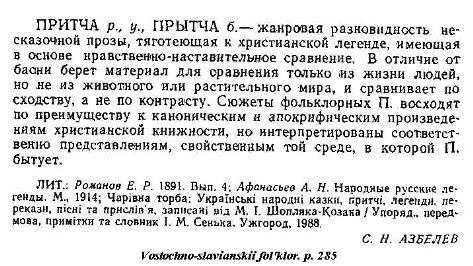
This citation from the first dictionary of Slavic folklore terminology exemplifies many of the qualities of the rest of the dictionary. Most of the entries have bibliographies, all are signed. The dictionary contains information useful for Belorussian, Russian and Ukrainian folklore studies. Along with the standard alphabetical arrangement by main entry there is an entry index at the end of the volume. The main entries are given in Russian, followed by the Belorussian and Ukrainian equivalents. A broad range of topics are included here, from specific genres of folklore to general discussions on the compilation of folkstories. Cross references are indicated with “see” entries.
![]()
Simvolika zhivotnykh v slavianskoi narodnoi traditsii.
Gur, A. V. Moscow: Izdatel’stvo “Indrik.” 1997.
U of I Library Call Number: International & Area Studies Russian Reference (Slavic) 398.0947 G96s
This work guides the user through the use of various animal motifs in Slavic folklore. The volume is divided into two parts. The first is a discussion of the organizational patterns used for folklore motifs in general and the selection of the pattern used in this volume. The second part is divided into sections by type of animal life: animals, amphibians and insects, birds and fish. Within these categories individual animals, as they are used, in folklore are discussed. The compiler defines folklore broadly to mean all kinds of folk stories, legends , tales, proverbs, as well as folk drawings.
This work is not simply an index of the occasion of usage of a particular motif, but also attempts to trace the usage from one culture to another. The entries are very extensive. The books has a detailed index to assist the researcher in finding a specific animal or insect. Each entry includes numerous references to supporting information. All Slavic cultures are included here. The one weakness the work has is the lack of a geographic index.
![]()
Russko-slavianskii slovar poslovits s angliiskimi sootvetstviiami.
Kotova, M. IU. Sankt-Peterburg: Izd-vo S-Peterb. un-ta, 2000.
U of I Library Call Number: International & Area Studies Russian Reference 398.99171 K848 r
Some 500 entries are included in this dictionary. Each entry includes the proverb in Belorussian, Bulgarian, Polish, Serbian, Slovak, Ukrainian, Czech and English. The dictionary is divided into several sections. The first is arranged by subject term, alphabetically. The second is a thematic listing of proverbs. Next is an index of Russian proverbs by all their components. The final section contains indexes for each of the languages in the dictionary. The compiler has included a list of texts that she used as source material.
![]()
Folklore
There is no general subject guide for folklore. However, guides to the bibliographic and reference resources are usually included in the general guides on literature such as Mezier (particularly volume 1) and Kandel. The titles listed below are of general importance for those working on folklore and should not be overlooked.
![]()
Istoriia russkoi i vseobshchei slovesnosti. Bibliograficheskie materialy.
Mezhov, V. I. S.-Peterburg: Tip. Ministerstva Putei Soobshcheniia, 1872.
U of I Library Call Number: Russian Reference 016.8917 M573i. This source is also available electronically through our catalog and can be found by following this link.
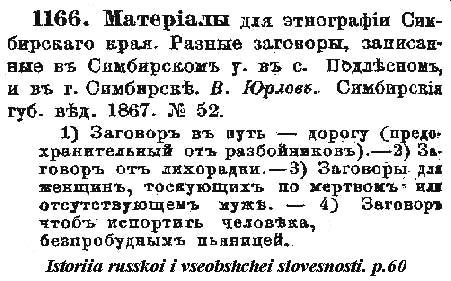
V. I. Mezhov compiled many bibliographies. This one focuses on literary publications issued between 1855 and 1870. While this bibliography is important for Russian literary studies in general and is cited in the literary guides, it might be overlooked as a source for folklore.
As can be seen from the above citation, Mezhov has indexed many of the provincial periodical publications that are of interest in the study of folklore. The bibliography is very well indexed with a combined name and subject index at the end of the volume. While the bibliography covers only a limited time period, there are over 450 entries on folklore.
![]()
Russkaia ustnaia slovesnost’.
Brodskii, N. L.; Gusev, N. A. Leningrad: Izdatel’stvo “Kolos”, 1924.
UIUC Call Number: International & Area Studies Russian Reference (Slavic) 016.398 B78r
This is an interesting guide in many respects. Perhaps one of its most intriguing features is strictly an accident of history. But the date of publication for this work places it in a period before Soviet ethnic policies had become firmly entrenched. Thus, it does not reflect the same level of censorship that is reflected in later works.The section devoted to “Dukhovnye stikhi” will not be found in Mel’ts. Entries are taken from books and articles. There is a section on bibliographic sources on the topic. The volume also includes short essays on the collection of oral tradition. The volume is organized into sections on various genres.
![]()
Ustnoe tvorchestvo narodov SSSR. Bibliograficheskii ukazatel’.
Binkevich, E. R. (comp.). Moscow: Gosudarstvenaia Biblioteka SSSR im. V. I. Lenina, 1940.
U of I Library Call Number: International & Area Studies Russian Reference (Slavic) 016.398 B51u
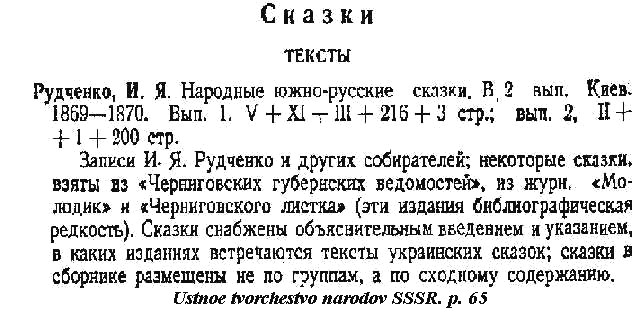
For those seeking information on the folk genre of oral tradition this is a useful source. It is a brief but fully annotated bibliography of resources on the topic, both monographs and periodical articles. The volume is organized into four major sections: “Soviet folklore,” “Folklore of the factories,” “Creative works of the peoples of the USSR,” “Peoples of the Russian Federation (other than Russian).”
While the scholar must be aware of the censorship issues that would have come into play in the compilation of this volume, it is still a useful list of the major sources on folklore. It includes works published in Russian, Belorussian, and Ukrainian between the nineteenth century and 1939. The bibliography indexes publications of what were originally oral works as well as works about these stories.
![]()
Literatura i fol’klor narodov SSSR. Ukazatel’ otechestvennykh bibliograficheskikh posobii i spravochnykh izdanii 1926-1970.
Moscow: Izdatel’stvo “Kniga,” 1975.
U of I Library Call Number: International & Area Studies Russian Reference 016.8917 L7122
– 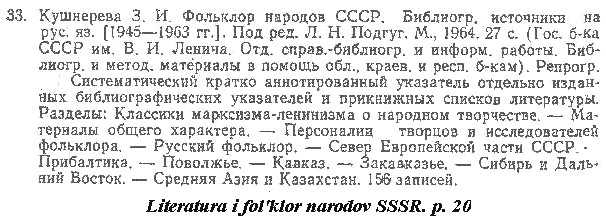 This bibliography is clearly not limited to folklore. It does include citations to literary works. There are superior sources for literary studies, such as Kandel’s bibliography. In the study of folklore there are not generalized guides for the Soviet period. This source can provide an overview of the materials being published for the majority of the Soviet period. It also has the added virtue of being organized by national group. Within each section there is a category for the literature of a particular people and one for their folklore. All entries include annotations as can be seen in the example below (p.20).
This bibliography is clearly not limited to folklore. It does include citations to literary works. There are superior sources for literary studies, such as Kandel’s bibliography. In the study of folklore there are not generalized guides for the Soviet period. This source can provide an overview of the materials being published for the majority of the Soviet period. It also has the added virtue of being organized by national group. Within each section there is a category for the literature of a particular people and one for their folklore. All entries include annotations as can be seen in the example below (p.20).
![]()
Russkii Fol’klor. Bibliograficheskii ukazatel’.
Mel’ts, M. IA. Leningrad: Akademiia Nauk SSSR.
U of I Library Call Number: International & Area Studies Russian Reference (Slavic)
- 016.39805 RU
- 016.39805 RU 1917-1944
- 016.39805 RU 1945-1959
- 016.39805 RU 1960-1975
- 016.39805 RU 1976-1980
- 016.39805 RU 1981-1985
- 016.39805 RU 1881-1916
- 016.3980947 IV 1r 1800-1855
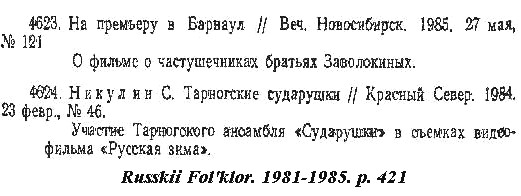
This excellent series on Russian folklore has been published since 1966. Each volume covered works on or reprints of Russian folklore for a specific time period. At present ten volumes have been published covering 1800-1855 and 1881-1985. Monographs and periodical publications are included in this bibliography which is organized into sections: “Texts”; “Studies, Articles, Notes”; “Scholarly and Methodological Literature. Folklore Bibliography.” Within each section are subdivisions on a broad array of topics: proverbs; fairy tales; ballads; mythology; children’s folklore; the history and theory of the genre; folklore and literature; folklore and film; the bibliography of folklore. The bibliography includes indexes of names, geographical locations and periodical sources. Each volume includes an introductory essay on the study of Russian folklore and problems with the sources.
The above citation shows a typical entry from the bibliography. This entry is taken from the 1981-1985 volume. It does illustrate the brevity of the annotations. This series is perhaps the most essential work for anyone interested in Russian folklore. Reference are cross-referenced where relevant. A new volume was issued in 2001 for the years 1991-1995.
![]()
Children’s Literature
Children’s literature has a special role in the history of Russian literature in general. When censorship was at its worst it offered a safe haven for authors and illustrators who might otherwise have seen their works go unpublished.
Along with the the sources listed below the folklore bibliographies often offer an alternative source of bibliographic information on children’s stories. It is especially interesting to look at the retrospective volumes of Mel’ts. These volumes provide bibliographic coverage for the pre-revolutionary years that are not well covered in the other sources. Each include sections on folklore for children.
Dulgach, R. V. “Istochniki dlia slovaria russkikh detskikh pisatelei (1760-1854) in Materialy po istorii russkoi detskoi literatury. (1750-1855). T. 1. Vyp. 1 . M. 1929, pp.145-178.
University of Illinois Library does not hold this volume. However, it is one of the only works covering children’s literature for the late 18th and early 19th centuries. The bibliography is held at Stanford, Yale, Cornell, Harvard and Cleveland Public libraries among others. It is described by Kandel as containing some 1500 citations and includes an index of authors, compilers, editors, translators, illustrators and headings.
![]()
Voprosy detskoi literatury i detskogo chteniia. 1918-1965.
Startsev, I. I. Moscow: Gosudarstvennoe Izdatel’stvo detskoi literatury, 1962.
U of I Library Call Number: International & Area Studies Russian Reference (Slavic) and Oak Street Facility 026.11 S796v v.1-2
The critical works on all aspects of children’s literature during the greater part of the Soviet era are indexed in these three volumes. All volumes are divided into sections on literature and criticism, illustrators, organization of children’s literature, bibliography and guides to children’s books. The third volume includes an index of review literature. Entries contain complete bibliographical information, listing the contents for collections of stories.
![]()
Detskaia literatura. Bibliograficheskii ukazatel’. 1918-1931.
Startsev, I.I. Moscow: “Molodaia gvardiia”, 1933.
U of I Library Call Number: History, Philosophy, & Newspaper FILM 026.11 D483 1918-1950
Main Stacks 026.11 D483 1953-1984
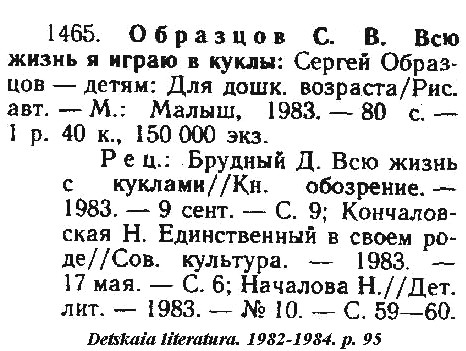
Detskaia literatura is perhaps the most important bibliography on children’s literature published during the Soviet era. the bibliography included sections on new children’s literature, studies of childrens’ literature and new bibliographies. These bibliographies include subdivisions on the children’s literature of each of the national groups in the the Soviet Union. Illustrators and translators are listed in separate indexes as are the authors. These volumes had supplementary sections with reviews
The earliest volumes of this series had a subject index, allowing access by motif. Later volumes were organized by author.

Bibliographies and Indexes of Russian Emigre Literature
Russian literature has a colorful history of emigre literature, dating back to the turn of the twentieth century. Understandably, emigre literature had a quite a surge during the 1910s, and again during the 1940s and 1950s. We’ve included here some indexes and bibliographies that may be useful for scholarly research.

Literaturnaia kritika i literaturovedenie na stranitsakh zarubezhnoi periodiki na russkom iazike, 1980-1995
Gezen, Galina, ed. Moskva: Knizhnitsa, 2007.
U of I Library Call Number: International and Area Studies Library (Slavic), 016.891709 G339l.
An index for published research materials about Russian émigré literature from the 19th to the 20th centuries. It’s divided into two parts. The first is a “General Section” that includes articles, interviews, summaries of seminars and conferences, as well as reviews from 1978-1995. The second section features information about foreign press regarding writers, editors, literary critics, and publishers. This latter section is organized alphabetically by person or organization, and within each entry the listings are chronological.

Literatura russkogo zarubezh’ia: Knigi 1917-1940: Materialy k bibliografii
Alekseev, Anatolii Dmitrievich, ed. Sankt-Peterburg: Nauka, 1993.
U of I Library Call Number: International and Area Studies Library (Slavic), 016.891708 AL25L.
This index consists of reference and source books on the history of Russian émigré literature. It includes separate editions, works of prose and poetry, and works of literary criticism. Entries are listed alphabetically by author of the work, and books are listed alphabetically by title. The entire index is available to download at Pushkinskii Dom.

Literatura russkogo zarubezh’ia vozrashchaetsia na rodinu: Vyborochnyi ukazatel’ publikatsii 1986-1990 gg.
Maksudov, Sergei, ed. Available online at the editor’s blog.
This index is a collection of the literature on diaspora in the Russian domestic press from 1986-1990. It consists of two parts: general academic articles listed alphabetically by author and title, and critical literature about individual literary authors listed alphabetically according to the author discussed, with each authorial section divided into two parts: publication of texts in alphabetical order by title, and critical works listed alphabetically by author.

Periodicals, periodical indexes, online journals, electronic texts
It is often useful to find a list of periodicals specializing in the publication of literature for a particular period. In general, the major periodical bibliographies, such as Lisovskii or Periodicheskaia Pechat’ SSSR have some subject access. In the case of the latter it is possible to get an overview of the publications on literature by looking at volume 8 of the set which is limited to linguistics, folklore, literary studies, literature, children’s literature and art. The section on literature is further sub-divided into sections on general political literary journal, , popular literary journals, women’s journals, satirical or humorous journals and literary bibliographic journals.
General periodical indexes frequently include literary titles and should not be overlooked when trying to find a periodical article. It would be worthwhile to look at the section on Russian periodical sources if you do not find what you are seeking here. It is also important to keep in mind that for some periods of time, the 18th century for example, there are comprehensive sources indexing the journal literature of the day that will save you a great deal of time.
Periodical indexes in general can save you a great deal of time. Online sources are excellent for many of the most recent publications. For older titles, historical materials, it will usually be necessary to fall back on the printed sources.
![]()
Periodika po literature i iskusstvu za gody revoliutsii.
Muratova, K.D. Leningrad: Izdatel’stvo Akademii Nauk SSSR, 1933.
U of I Library Call Number: International & Area Studies Russian Reference (Slavic) 016.057 M93p1963
Muratova’s bibliography focuses on the turbulent years of the revolution and its aftermath. In it are collected references to journals on art, literature, theater, film, music and applied arts. Newspaper titles are also included in this bibliography. The bibliography is organized alphabetically and includes several indexes: chronological, systematic, geographic, publisher/issuing body and personal name. Entries include full bibliographic information and details on their publication history and all title changes. Although it is focused on a specific time period, the importance of that period makes Muratova’s bibliography an important source for Russian 20th century cultural history.
![]()
Russkie literaturnye al’manakhi i sborniki XVIII-XIX vv.
Smirnov-Sokol’skii, N. P . Moscow: Izdatel’stvo “Kniga,” 1965.
U of I Library Call Number: International & Area Studies Russian Reference (Slavic) and Oak Street Facility 016.8917 Sm4r
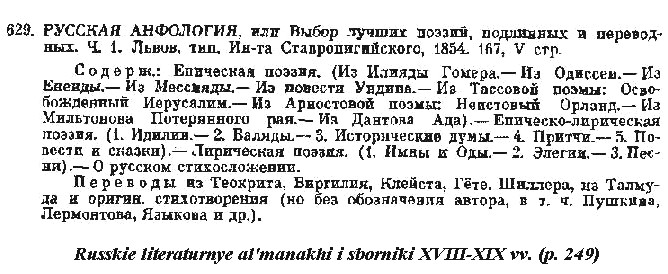
This guide to literary almanacs and collections indexes everything issued from the first publications in this genre to 1900. Enormously useful, it lists not only the publications being issued but their entire contents and provides a brief history of each title. The volume includes two indexes: an index of titles and an index of names. The entries are listed chronologically.
As with so many of the samples we have used in this guide, this entry is one of the very brief ones. Most are far more extensive. This is an excellent source for finding individual poems and specific articles if you know which publication they were published in or know the author. The editor of the journal excluded those almanacs that were published primarily for children.
![]()
Literaturno-khudozhestvennye almanakhi sborniki, 1900-1937.
Rogozhin, N. P. Moscow: Izd. Vsesoiuznoi Knizhnoi Palaty, 1958-1960. V.1-4
U of I Library Call Number: International & Area Studies Russian Reference (Slavic) and Oak Street Facility 016.8917 V96l v.1-4.

This source is especially useful for identifying individual works by specific authors. The volumes include lists of the contents of all literary collections and almanacs published in Russia from 1900 to 1937. This includes non-periodical publications with original works and translations of literary works. These works can be short stories, poetry, literary criticism, virtually any work in a literary genre. As with Smirnov-Sokol’skii’s work, the volume is arranged by chronologically. Each entry includes full bibliographic information, identifies the type of publication, and lists the complete contents of the journal and information on all illustrations. The volumes have several indexes: title index, geographic index, name index and an index of anonymous works.
The bibliography also includes numerous illustrations of the sources being indexed as can be seen here on the left.
![]()
Materialy k bibliografii russkikh literaturno-khudozhestvennykh al’manakhov i sbornikov: 1900-1937.
Bogomolov, N. A. Moscow: Lanterna-Vita, 1994.
U of I Library Call Number: International & Area Studies Russian Reference (Slavic) 016.8917 B634m V.1
In some ways a supplement to Rogozhin’s work, this single volume bibliography includes not just the works published in Russia, but all published in the Russian language, regardless of their place of publication. This is, therefore, an extremely important work for those interested in émigré studies.
Like Rogozhin’s work, the entries are arranged chronologically. Each entry includes complete bibliographical information and a listing of the full contents of the work cited. The compiler has tried to provide numerous access points and included an index by title, personal name, geographic location and a separate list of works published anonymously. For anyone trying to identify a particular title this can be a very helpful work.
![]()
Zhurnal’nyi Zal
URL: https://magazines.gorky.media/
 Most of the current literary journals are available in full text at this site. Many of the titles have retrospective issues for the past three to four years. The journals listed here include Arion, Vestnik Evropy, Volga, Voprosy Literatury, Druzhba Narodov, Zvezda, Znamia, Innostranaia Literatura and many other titles. If you are working at an institution which is not able to subscribe to all the literary journals this is an excellent site for keeping current with new literature. There is a very handy author list which will link you to the writings of a specific author.
Most of the current literary journals are available in full text at this site. Many of the titles have retrospective issues for the past three to four years. The journals listed here include Arion, Vestnik Evropy, Volga, Voprosy Literatury, Druzhba Narodov, Zvezda, Znamia, Innostranaia Literatura and many other titles. If you are working at an institution which is not able to subscribe to all the literary journals this is an excellent site for keeping current with new literature. There is a very handy author list which will link you to the writings of a specific author.
![]()
Literary Subject Sites
The web has become an important resource for all scholars in the last few years. Most scholars are aware of the “listservs” in their area of expertise. New online subscription services, such as ABSEES and MLA, provide electronic access to citations for books and articles. Full text is available electronically through such services as ProjectMuse, EBSCO and JSTOR. New search engines appear constantly offering further challenges.
Since search terminology is not standardized on the web, that is, there are no standard search terms, it can be very difficult to pinpoint what you need. The more general the term used, the larger the number of matches you are likely to get. Given all these difficulties, it can be useful to begin with a subject site. At these sites the lists of sources are focused and usually will lead you to other material of interest for your work.
Istoricheskie istochniki po otechestvennoi istorii do nachala XVIII v.
URL: http://www.hist.msu.ru/ER/Etext/PICT/feudal.htm
This site is useful for both historians and literary scholars. Indeed anyone interested will find this list of links to electronic texts compiled by scholars at Moscow University of enormous value. There are links here to the text of the primary chronicle, the old Russian laws, and the Domostroi among other valuable material. Unfortunately there is no annotation, thus the user must be familiar with the sources or willing to spend a great deal of time exploring.
![]()
Fundamental’naia Elektronnaia Biblioteka. Russkaia Literatura i Fol’klor
URL: http://feb-web.ru/

Fundamental’naia Electronnaia Biblioteka (FEB) is a result of collaboration between the Russian State Library, the Gorky Institute of World Literature, the Institute of Russian Literature (the Pushkin House), and other institutions. It contains primary, secondary, and reference texts pertinent to 11th-20th-century Russian literature, Russian folklore, and the history of Russian literary scholarship and folklore studies. The main content of FEB is arranged by the so-called “electronic scholarly publications,” i.e. by clusters of texts devoted to a particular person or time period. A cluster on Mayakovsky, for example, includes encyclopedic entries on him, 13 full-text volumes of his collected works, a list of scholarly publications about him, a list of Mayakovsky’s bibliographies (some of them in full-text versions), and biographical publications. Additionally, the FEB contains multiple Russian literature reference resources, indexes of authors and work titles, and a bibliographic database.
![]()
Elektronnye publikatsii Instituta Russkoi Literatury (Pushkinskogo Doma)
URL: http://www.lib.pushkinskijdom.ru

This website serves as a repository for publications of the Institute of Russian Literature (the Pushkin House). It contains full-text versions of the works on Old Russian literature and the 18th century Russian literature published by the Pushkin House beginning 1934, a series of Old Russian literature bibliographies, 12 volumes of Old Russian texts with translations, Aleksandr Pushkin’s works published during his lifetime, reference works, and other miscellaneous works pertinent to Russian literature of various time periods.
![]()
Sovetskaia Literatura
URL: http://www.ruthenia.ru/sovlit/

This is an excellent site for those seeking retrospective materials in Russian literature. Part of the Russkoe Bibliograficheskoe Obshchestvo, this site focuses on resources regarding Russian literature in the twentieth century. The compilers are attempting to digitize the contents of journals published in the early part of the twentieth century in the discipline. Working from Muratova’s bibliography of Russian literary periodicals, Periodicheskaia Pechat and other resources the site presently lists the titles of journals and “sborniki” published in roughly the first third of the century. It also includes a list of pseudonyms, a list with descriptions of each journal. The site will also include poetry by a number of authors. It is an enormous undertaking and holds out tremendous promise for access to materials that are presently difficult to obtain.
![]()
Online Resources
Beginning with 2000, an increasing number of online libraries with Russian texts is appearing on the Internet. Usually, they are supported and developed by enthusiasts and, as a result, are not always comprehensive in their coverage or systematic in materials arrangement. However, there are still valuable and diverse materials in them and some of these libraries are worth mentioning in this guide.
Lib.Ru: Biblioteka Maksima Moshkova
URL: http://lib.ru/

This is a list of links to prose, poetry, drama and fiction in Russian in electronic form. This site contains a large number of titles and their full text in Russian. The page is maintained by a systems specialist at the Russian Academy of Sciences. It has been available for some years and is updated frequently. The site is organized by broad genre. There is a large amount of samizdat and émigré material here. As links are updated the date of the update is added to the link. The organization does make this site somewhat difficult to navigate but the large number of sources listed here make it worth the difficulty.
![]()
ImWerden. Nekomercheskaia elektronnaia biblioteka
URL: http://imwerden.de

ImWerden is a collection of texts in PDF format on various topics. A menu on the left-hand side of the website shows the range of topics and the number of resources for each topic. In addition to Russian literature texts of different time periods, ImWerden has Russian emigre periodicals, literary criticism materials, literature for children, memoir literature, books in prerevolutionary orthography, and video and audio materials.
Additionally, there is a large number of online portals that contain texts popular among contemporary Russian readers. Fictionbook.ru can serve as an example of such a library. While it may present little interest for students of classical Russian literature as it has no “bibliography” or “literary criticism” sections, those who are interested in Russian readers’ habits and preferences today will certainly find this abundance of material useful.
![]()
Friends and Partners Russian Literature
URL: https://fplib.ru/

This site claims to be one of the largest collections of electronic Russian literary texts. The compilers have limited themselves to the works of the poets of Russia. One of the more useful features of this site is the inclusion of translated literature. Many entries have biographical information and where possible, this is supplemented with links to online works. The site is extremely well organized making it very easy to find information either through a specific term search or using the site organization by century. There are also collections quotations and proverbs organized by subject within each chronological grouping.
Additionally, there are more resources on the Russian Web that are narrow in their coverage and that are dedicated to specific periods and literary schools. Rukopisnye Pamiatniki Drevnei Rusi can serve as an example of such a resource; it has a full text collection of old Russian chronicles, manuscripts and birch bark documents.
![]()
Biographical Resources
Russkie pisateli. 1800-1917. Biograficheskii slovar’.
T. 1-4. Nikolaev, P. A. Moscow: Izd. “Sovetskaia Entsiklopediia, 1989-.
U of I Library Call Number: International & Area Studies Russian Reference (Slavic) and Main Stacks 891.70922 R921

Anyone seeking biographical information on a writer of the nineteenth century will find this a rich resource. The entries include not only the basic biographical data on the author under discussion, but also a sketch of their literary career, the critical reaction to their works and a thorough bibliography. Many articles include a photograph and all are signed. Most entries are lengthy and the one pictured here is not particularly representative but was used in the interest of space.
All entries include birth and death dates in the new style. The use of cursive in an article indicates a cross-reference to another article in the dictionary. The bibliographies at the end of each article begin with the major works of the author, which will be followed by references to letters, where relevant, citations to biographical material, critical publications, and finally archival holdings.
The source is unique in that it includes many émigré figures. Archival information on these figures tends to be limited to Russia or East European countries. The text of the entries provides a detailed literary biography, tracing an author’s activities from his earliest publications in Russia. In this sense, the dictionary expands on the excellent sources of the late 19th and early 20th centuries by IAzykov and Gennadi , which were more heavily bibliographic in nature. The volumes are liberally illustrated with photographs or drawings of the authors and of their works.
Most entries include information on the location of the subject’s archives, including fond and opis numbers, adding to the importance of this work for researchers.
![]()
Russkie pisateli XX vek: Biobibliograficheskii slovar’ v dvukh chastiakh.
N.N. Skatov , ed. Moskva: Prosveshchenie, 1998.
U of I Library Call Number: International & Area Studies Russian Reference (Slavic) 891.700922 R9214 v.1, v.2
Covering over 500 writers, playwrights, and poets, this biographical dictionary has very detailed entries on Russian writers (including emigres) of the twentieth century. The entries, which are usually several pages long, discuss the writer’s career and most important works as well as his or her historical significance. All entries have bibliographical references for works by and about the author. Since this is one of the most recent reference works of literary biography, it has more current bibliographic references.Entries are signed by the scholar who wrote them. Portraits of some of the writers are included.
![]()
Slovar’ russkikh zarubezhnykh pisatelei.
Bulgakov, Valentin. New York: Norman Ross, 1993.
U of I Library Call Number: International & Area Studies Russian Reference (Slavic) 891.709 B871s

This dictionary was compiled in the 1930’s by the founder and director of the Russian-Cultural-Historical Museum in Prague, Valentin Bulgakov. Although it was never completed, it is an interesting source of information on emigre writers because it was compiled by an emigre writer from that time. The editor has corrected some inconsistencies and added dates of death, among other things. Entries are fairly brief and include biographical data and major publications. Entries are arranged alphabetically by surname. Some interesting appendices include short entries for major journals, anthologies and newspapers as well as for literary groups and publishing houses mentioned in the dictionary. See the entry below on Lidiia Chervinskaia.
![]()
Dictionary of Russian Women Writers.
Marina Ledkovsky et al., eds. Westport, CT: Greenwood Press, 1994.
U of I Library Call Number: International & Area Studies Russian Reference (Slavic) 891.700922 D561
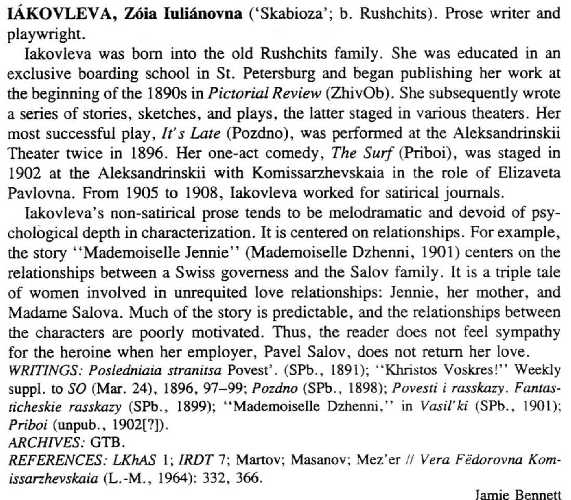
This English-language source contains articles written and signed by literary scholars. Many of the entries are lengthy with bibliographical references for works by and about the writers. The entries, which discuss the life, work and significance of the women writers, are arranged alphabetically by surname. The text is supplemented by a detailed index of names and subjects and several appendices including a chronology of the Russian women writers in the text and a time line of the writers in historical context. Unfortunately, this source is marred by bibliographical errors in some references. See the entry for Zoia Iakovleva.
![]()
Obzor zhizni i trudov pokoinykh russkikh pisatelei.
D.D. Iazykov . Sankt-Peterburg: Tip. A.S. Suvorina, 1885-1916.
U of I Library Call Number: International & Area Studies Russian Reference (Slavic) and ACES 891.70922 Ia9o facsim v.1-9 + v.11-13; International & Area Studies Microform (Slavic) FILM 928.917 IA9o v.1-9
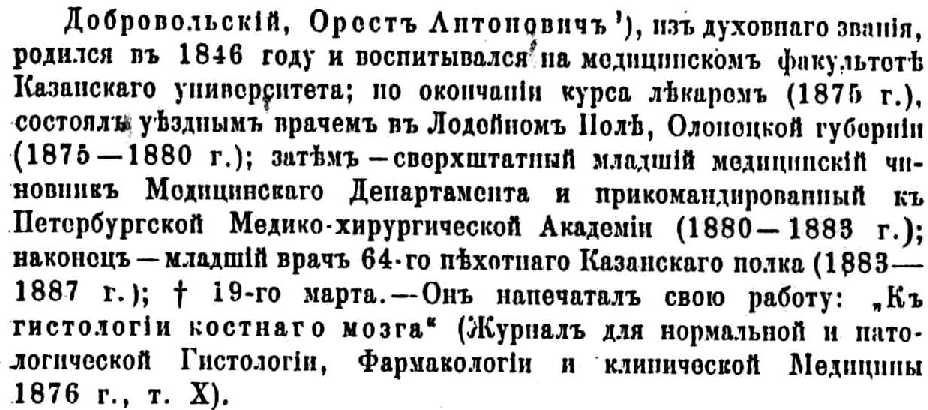
Compiled by the famous Russian bibliographer D.D. Iazykov, this source is particularly valuable for its bibliographical references for 19th century Russian writers. Each volume contains entries for writers who died in a particular year beginning with volume 1 and the year 1881 and ending with volume 13 and the year 1893. Volumes 11-13 were published as part of the journal Sbornik otdieleniia russkago iazyka i slovesnosti Akademii nauk. Within each volume the entries are arranged alphabetically by surname. Each volume has a cumulative index to the previous volumes and volume 9 also has additional entries for the first 8 volume plus entries for writers who died in 1889. The later volumes appear under the title Obzor zhizni i trudov russkikh pisatelei i pisatel’nits. Later volumes also have additional entries for the earlier volumes that appear in appendices. See the entry on Orest Antonovich Dobrovol’skii which is one of the more brief entries in this work. It does not have the extensive bibliographical references that many of the entries contain.
![]()
Slovar’ psevdonimov russkikh pisatelei, uchenykh i obshestvennykh deiatelei.
Masanov, I.F. Moskva: Izd. Vsesoiuznoi knizh. palaty, 1956.
U of I Library Call Number: International & Area Studies Russian Reference (Slavic) and Main Stacks Reference 014.7 M37s 1956 v.1-4
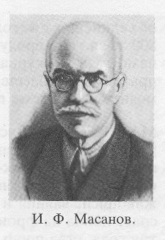 Compiled by I.F. Masanov over a period of 40 years, this is the standard Russian pseudonym dictionary. It was published posthumously after some preparatory work by Masanov’s son, the famous Soviet bibliographer, Iu. I. Masanov. Have you ever read an article in Russian which is signed only by initials? This wonderful work will tell you who that author really is. It will also tell you in the index what the various pseudonyms are that were used by a particular author as well as giving birth and death dates of that author. The scholarly apparatus of the work includes the bibliographic sources of the information for each pseudonym cited after the abbreviation Ist.: which stands for Istochnik or “source”. The first volume contains entries for A-I, the second for K-P, the third R-Ia and entries in Latin letters, plus a dopolnenie for the first three volumes. Volume 4 contains a new dopolnenie to the first three volumes and an extensive index that should not be overlooked. See the entry below from the index volume for Viacheslav Rudol’fovich Menzhinskii, the head of the secret police from 1926-1934, who published symbolist poetry as a young man. The entry gives two pseudonyms, Ilovaiskii and Stepinskii, that will appear in the main entries with citations to the works published under those names. If you are interested in his symbolist poetry, see Literaturno-khudozhestvennye al’manakhi i sborniki .
Compiled by I.F. Masanov over a period of 40 years, this is the standard Russian pseudonym dictionary. It was published posthumously after some preparatory work by Masanov’s son, the famous Soviet bibliographer, Iu. I. Masanov. Have you ever read an article in Russian which is signed only by initials? This wonderful work will tell you who that author really is. It will also tell you in the index what the various pseudonyms are that were used by a particular author as well as giving birth and death dates of that author. The scholarly apparatus of the work includes the bibliographic sources of the information for each pseudonym cited after the abbreviation Ist.: which stands for Istochnik or “source”. The first volume contains entries for A-I, the second for K-P, the third R-Ia and entries in Latin letters, plus a dopolnenie for the first three volumes. Volume 4 contains a new dopolnenie to the first three volumes and an extensive index that should not be overlooked. See the entry below from the index volume for Viacheslav Rudol’fovich Menzhinskii, the head of the secret police from 1926-1934, who published symbolist poetry as a young man. The entry gives two pseudonyms, Ilovaiskii and Stepinskii, that will appear in the main entries with citations to the works published under those names. If you are interested in his symbolist poetry, see Literaturno-khudozhestvennye al’manakhi i sborniki .

![]()
Free voices in Russian literature, 1950s-1980s. A bio-bibliographical guide.
Sumerkin, Alexander, ed. New York: Russica, 1987. (“Russica” bibliography series ; no. 4)
U of I Library Call Number: International & Area Studies Russian Reference (Slavic) and Oak Street Facility 016.8917 St46f
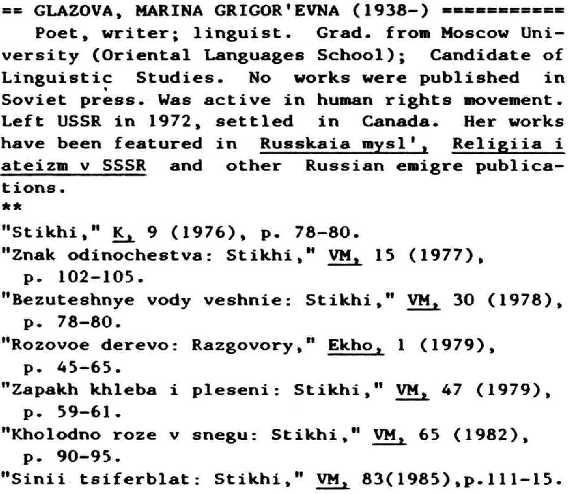
This unique bio-bibliography details works for over 900 writers who lived in the Soviet Union or who emigrated after 1955 and whose writings were published in the emigre press between 1957 and 1985 with or without the knowledge of the author. Their works were not published in the Soviet Union due to censorship. Many titles that were samizdat are represented in these bibliographies. Besides fiction writers, also included are poets, dissidents, essayists, and some politicians. Works that were published in emigre newspapers are excluded from the scope of this book. Entries are arranged alphabetically by surname and begin with a biographical sketch which provides basic life data and also elucidates the author’s difficulties with the Soviet regime. The bibliographies follow the biographies. A list of sources consulted is appended at the end. See the entry below for Marina Grigor’evna Glazova.
![]()
Russkie detskie pisateli XX veka. Biobibliograficheskii slovar’.
Moskva: Izd-vo “Flinta”, “Nauka”, 1997.
UIUC Call Number: International & Area Studies Russian Reference (Slavic) 891.700922 R293
This dictionary includes 245 articles on well known 20th century Russian children’s writers and illustrators. Entries include biographical data, a discussion of their works and significance, the genres they contributed to, pseudonyms if applicable, and bibliographical references for works by and about the figures. Only a person’s contributions to the field of children’s literature are emphasized in the articles regardless of how famous that individual was in other realms, thus, for example, in the article on Blok, very little is said of his vast contribution to Russian poetry beyond what is necessary for background information. Articles range from one to six pages in length. Hidden among the biographical entries is an article on 20th-century Russian periodicals for children (p.378-384). All articles are signed by their contributors. See the entry on Evgeniia Trutneva.
![]()
Pisateli nashego detstva. 100 imen. Biograficheskii slovar’. Tom 1-3.
Moskva: Libereia, 1998.
U of I Library Call Number: International & Area Studies Russian Reference 891.700922 P674 v.1 [UIUC lacks t.2-3]
300 children’s writers from around the world are the subject of this biobibliographical dictionary. Compiled by librarians at the Russian State Children’s Library in Moscow, the articles in Pisateli nashego detstva present biographical data, a brief discussion of their works, a portrait of the author, and bibliographical references. The references are divided into several sections: works by the author, works about the author, translations done by the author and translations of the author’s works into Russian, screen adaptations for films and cartoons, illustrators, and other sections that may be relevant for only a few authors. The references, however, are not comprehensive. Rather they emphasize Russian editions and critical works. An interesting highlight in this dictionary is that there are articles for both L. Frank Baum who wrote the Wizard of Oz and his Russian adaptor Aleksandr Volkov. There are many illustrations from the children’s books sprinkled throughout and two indexes, one for illustrators and one for translators. The list of contributors and the articles they wrote for the dictionary appears at the end of the book. See the entry on Petr Pavlovich Ershov.
![]()
The Soviets often produced biographical dictionaries of writers based on ethnic groups or regions. An example of just one such source is given below.
Pisateli Udmurtii: Biobibliograficheskii spravochnik.
A.N. Uvarov. Izhevsk: Udmurtiia, 1989.
U of I Library Call Number: International & Area Studies Russian Reference (Slavic) 016.89453 Uv1p
Containing 179 biographical sketches for Udmurt writers from pre- and post-revolutionary eras, this dictionary was published on the centenary of the publication of the first original poem written in the Udmurt language. The introduction gives a very brief survey of Udmurt literary publishing. Entries contain a portrait, biographical data, and bibliographical references for works by and about the author. Most of the entries are two pages long and they are arranged alphabetically by surname of the author. At the back of the book is a table of the scholars who participated in the preparation of the dictionary and the entries that they wrote. Follow the link for the entry on Sergei Milovskii.
![]()
